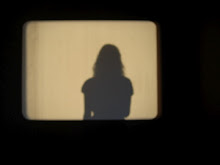
Hustle and Flow is a movie about DJay, a pimp from Memphis, Tenn. who dreams of making it big in the music industry as a way out of his crime and oppression-filled life. The film explores power dynamics in various industries and relationships and how they affect individuals and their dreams.
The film is very entertaining, and the base-emotion-provoking scenes and tensions are there. However, should one watch the movie with his or her intellect in tow as well…then, that is another story. The problem with Hustle and Flow is best addressed by its own official Web site’s summary of the plot: “DJay’s metamorphosis affects his entire house, as the women in his life Shug and Nola find ways to contribute to the creative process.” This statement clues the viewer in on the intentions of the writer/director, Craig Brewer. It seems clear that Brewer aimed to create a compelling story about the hardships of the Southern pimp, and how he is saved by art and aspirations. This is further confirmed if one pauses to consider that DJay is the protagonist, the main character for whom the story is told, for whom the viewer cheers and cries.
But hopefully one stops right here and protests, “find ways?” Find ways? Anyone who watched the movie using their eyes and ears should have noticed that the women did not “find ways” to help DJay. They made DJay. They were everything from his financial backers to his back-up singers. This summary exemplifies the non-issue the film makes of gender relations. Through the use of the socially-accepted construct of the pimp and the ho, the film gets away (in most people’s view) with the failure to comment on DJay’s treatment of women.
The film romanticizes the pimp-ho scenario that dates back to the 1970s, taking advantage of the fact that much of its potential audience probably has never even seen a real prostitute, and thus will not be appalled by the unrealistic representation in the movie. The choices in wardrobe, soundtrack, and setting play on blaxplotation, seen in such films as Superfly. However, it is still useful to examine what this movie is saying about race and gender.
The Southern setting of Hustle and Flow gives it the advantage of an air heavy with heat and history: history of slavery, patriarchy, and civil rights issues. It is ironic(in a way that Brewer never addresses) that in a movie about a Southern black man striving for freedom, he is given the career of slaveowner, albeit with a modern twist. Nola and Shug certainly have the “freedom” to leave, but their freedom is rendered null when the other option means (more) physical endangerment as well as the severance of the only emotional ties these women know. Instead, this movie glorifies DJay’s position as pimp and ultimate patriarchal figure. Brewer’s film could have been a telling commentary on the position of black women in society.
Instead, it weaves itself tightly into the fabric of the Southern patriarchal quilt. Shelby, the ‘cracker,’ reinforces the movies ideology with the help of another anti-feminist, Malcolm X, saying: “You got to get what you got to say out, by any means necessary…every man has the right."
Frankly, the movie is insulting to women. It is filled with instances of DJay giving tokens to his women, who are more than happy to take whatever he has to give them, which was most likely bought with money they earned. The only time Brewer approaches an honest, double-sided look at the situation is the scene with Nola and Djay, when she says, “I know when you’re messin’ with my head, ‘cause I let you." There may have been a glimmer of hope for the oversimplified female characters in the movie at this point, but it is extinguished as the viewer is re-caught up in DJay’s efforts, and climaxes with the women dancing to his song ( a song about violence against women) when it plays on the radio. Even more telling, and even more problematic, is Shug dancing to it with her baby girl. Thus the cycle is passed on down generations.
The subjugation faced by DJay is the central conflict of the movie, yet he reflects that same oppression on his hoes. Perhaps that is the lesson one can take away from this movie, although it may not have been Brewer’s intention: oppression, be it in the form of racism, classicism, sexism, or other, is cyclical and will continue cycling, thwarting dreams right and left, until it is addressed directly. It is hard to see past a movie in which women are portrayed as weak and groveling, to an unrealistic degree. It is hard to see past a movie whose secondary characters are women whose “contribution to the creative process” of their pimp compromises their dignity, safety, and happiness.
Wednesday, May 03, 2006
Hard for a pimp?
Subscribe to:
Posts (Atom)
